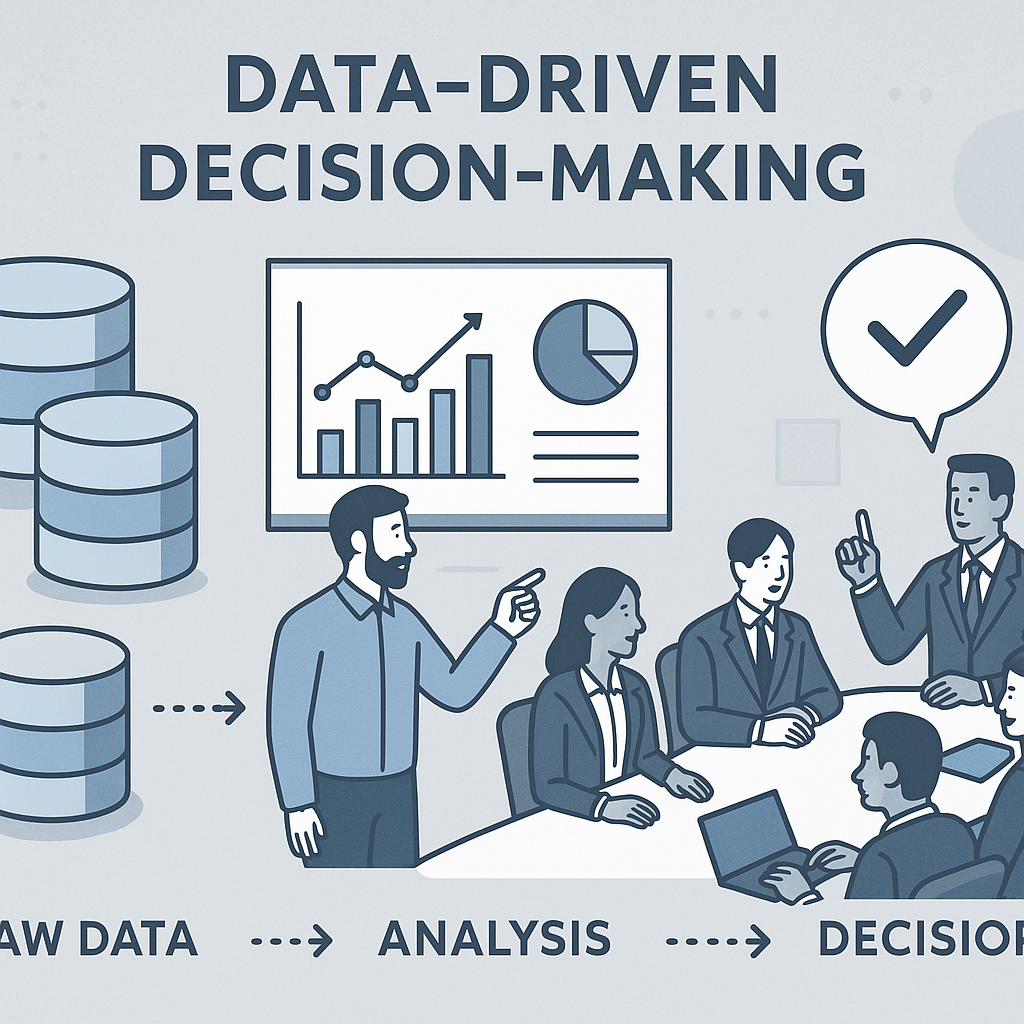
Table of Contents
“We need to be more data-driven.” It’s a phrase echoed in countless strategy meetings and executive off-sites. An admirable aspiration that’s fueled massive investments in business intelligence platforms, data warehouses, and analytics teams. Yet after observing numerous organizations on this journey, I’ve seen a persistent gap between aspiration and operational reality. Many companies are data-rich but insight-poor. They have the dashboards, but they don’t have the decision-making culture.
What does it truly take to move beyond producing reports and embed a genuine data-driven ethos into an organization’s fabric? It’s less about the technology and more about the human and process architecture.
The Dashboard Fallacy: Why Tools Aren’t Enough
A common pitfall is what I call the “dashboard fallacy,” believing that deploying Power BI or Tableau will automatically lead to better decisions. It won’t. A perspective forged through years of enterprise implementations suggests that dashboards are merely starting points. They present the “what,” but rarely provide the “why” or the “what next.”
The most visually stunning dashboard becomes digital shelfware if the organization lacks processes to interpret findings and cultural willingness to act on them. I’ve observed beautifully designed dashboards collecting dust because underlying decision-making processes remained unchanged. Meetings still ran on intuition, with data treated as secondary validation for predetermined choices.
Architecting for Insight: The Process Layer
True data-driven organizations architect their core processes to demand data. This is a subtle but critical shift. It’s not about looking at data after the fact; it’s about integrating data as a non-negotiable input at key decision points.
Consider these architectural patterns that insights distilled from numerous complex deployments indicate are most effective:
Decision Gates: Key strategic processes (budget allocation, product launch, capital investment) should have formal gates where specific data-driven criteria must be met before proceeding. The data isn’t just reference material; it’s a prerequisite.
Structured Review Cadences: Effective organizations establish regular rhythms for reviewing data. Weekly operational reviews, monthly financial deep dives, quarterly strategic assessments. The key is consistency. These aren’t ad-hoc meetings; they’re institutionalized forums where data drives the conversation.
Hypothesis-Driven Analysis: Instead of just “exploring the data,” mature teams start with clear business hypotheses. “We believe a 5% price reduction in Region A will lead to 15% volume increase.” They use data to validate or invalidate that hypothesis, transforming analysis from passive reporting into active, scientific inquiry.
The Human Element: Fostering Data Literacy
You can have the best processes and tools, but they’ll fail if your people lack skills to use them effectively. This goes beyond teaching someone how to filter in Tableau. It’s about cultivating genuine data literacy.
This means training teams to ask the right questions of data. Teaching them to distinguish correlation from causation. Helping them understand data limitations and potential bias. Building a culture of healthy skepticism and intellectual curiosity.
Longitudinal data from transformation projects highlights that successful organizations invest as much in developing analytical capabilities as they do in technology. This might involve creating centers of excellence, establishing mentorship programs, or building data literacy into performance expectations.
Governance as Enabler, Not Gatekeeper
None of this works without robust data governance. But governance in data-driven organizations must be framed as an enabler, not a gatekeeper. Its purpose isn’t to lock down data, but to make it trustworthy and accessible.
This involves clear data ownership, consistent definitions for key business metrics (so everyone speaks the same language), and transparent data lineage so users understand information sources. When people trust the data, they’re far more likely to use it for decisions. My earlier thoughts on financial data governance explore this in detail.
The journey to becoming truly data-driven is challenging. It requires deliberate, sustained effort to architect processes, develop people, and govern data effectively. But for organizations making this commitment, the payoff is immense: faster, smarter decisions that create sustainable competitive advantage.
For further discussion on these strategic frameworks, please connect with me on LinkedIn.